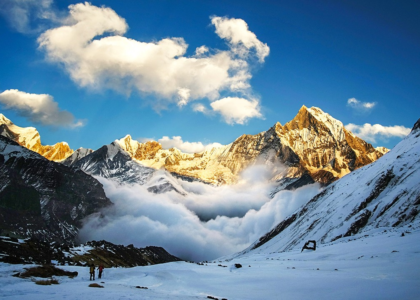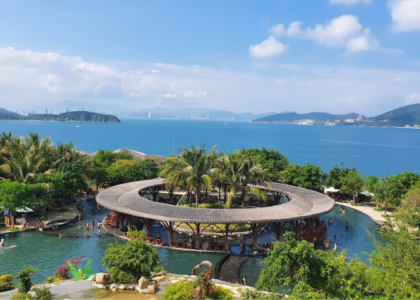How to Hike the Inca Trail: A Complete Guide to the Ultimate Adventure
The Inca Trail is one of the most iconic and breathtaking treks in the world, leading adventurers through the Andes Mountains to the ancient ruins of Machu Picchu. This 26-mile (42-kilometer) journey is a bucket-list experience for hikers, history buffs, and nature lovers alike. However, hiking the Inca Trail requires careful planning, preparation, and respect for its cultural and environmental significance. In this guide, we’ll walk you through everything you need to know to hike the Inca Trail successfully and make the most of this unforgettable adventure.
Why Hike the Inca Trail?
The Inca Trail is more than just a hike—it’s a journey through history, culture, and stunning natural beauty. Along the way, you’ll encounter:
- Ancient Inca ruins: Discover archaeological sites like Llactapata, Runkurakay, and Wiñay Wayna.
- Breathtaking landscapes: Trek through cloud forests, high mountain passes, and lush valleys.
- Machu Picchu: End your journey at the iconic “Lost City of the Incas,” one of the New Seven Wonders of the World.
When to Hike the Inca Trail
The best time to hike the Inca Trail is during the dry season, which runs from April to October. During this period, you’ll enjoy clear skies, mild temperatures, and minimal rainfall. The peak months are June, July, and August, but these are also the busiest. If you prefer fewer crowds, consider hiking in April, May, September, or October.
Permits and Regulations
The Inca Trail is highly regulated to protect its cultural and environmental heritage. Here’s what you need to know:
- Permits are required: Only 500 people (including guides and porters) are allowed on the trail each day. Permits often sell out months in advance, so book early.
- Book through a licensed tour operator: Independent hiking is not allowed. You must book your trek through a licensed agency.
- Bring your passport: You’ll need it to enter the trail and Machu Picchu.
Choosing a Tour Operator
Selecting the right tour operator is crucial for a successful Inca Trail experience. Look for:
- Reputation: Read reviews and choose a company with a strong track record.
- Sustainability practices: Support operators that prioritize eco-friendly and ethical practices.
- Group size: Smaller groups often provide a more personalized experience.
- Inclusions: Ensure the package includes permits, meals, porters, and a knowledgeable guide.
Physical Preparation
The Inca Trail is a challenging hike, with steep ascents, high altitudes, and long days of walking. To prepare:
- Train in advance: Focus on cardio, strength training, and hiking with a weighted backpack.
- Acclimatize to altitude: Spend a few days in Cusco (11,152 feet/3,399 meters) before starting the trek.
- Break in your hiking boots: Wear them on training hikes to avoid blisters.
Packing Essentials
Packing smart is key to a comfortable and enjoyable trek. Here’s what to bring:
- Clothing: Layered clothing for varying temperatures, a waterproof jacket, and moisture-wicking base layers.
- Footwear: Sturdy, broken-in hiking boots and comfortable camp shoes.
- Gear: A high-quality backpack, sleeping bag, trekking poles, and a headlamp.
- Other essentials: Sunscreen, insect repellent, a reusable water bottle, and a first-aid kit.
The Inca Trail Itinerary
The classic Inca Trail trek takes 4 days and 3 nights. Here’s a day-by-day breakdown:
Day 1: Cusco to Wayllabamba
- Distance: 7.5 miles (12 kilometers)
- Highlights: Scenic views, the Inca site of Llactapata, and camping in the Andes.
Day 2: Wayllabamba to Pacaymayo
- Distance: 7.5 miles (12 kilometers)
- Highlights: Crossing Dead Woman’s Pass (13,828 feet/4,215 meters), the highest point on the trail.
Day 3: Pacaymayo to Wiñay Wayna
- Distance: 9.5 miles (15 kilometers)
- Highlights: Visiting Inca ruins like Runkurakay and Wiñay Wayna, and enjoying stunning mountain views.
Day 4: Wiñay Wayna to Machu Picchu
- Distance: 3.7 miles (6 kilometers)
- Highlights: Arriving at Machu Picchu at sunrise and exploring the ancient city.
Tips for a Successful Trek
- Stay hydrated: Drink plenty of water to combat altitude sickness.
- Pace yourself: Take your time, especially on steep ascents.
- Respect the trail: Follow Leave No Trace principles and respect local customs.
- Enjoy the journey: Take time to appreciate the scenery, history, and camaraderie.
Frequently Asked Questions (FAQs)
How difficult is the Inca Trail?
The Inca Trail is considered moderate to challenging due to its steep climbs, high altitude, and long hiking days. Proper preparation is essential.
Can I hike the Inca Trail without a guide?
No, independent hiking is not allowed. You must book through a licensed tour operator.
What is the altitude on the Inca Trail?
The trail reaches its highest point at Dead Woman’s Pass (13,828 feet/4,215 meters). Proper acclimatization is crucial.
Is the Inca Trail safe?
Yes, the trail is safe for hikers who are well-prepared and follow their guide’s instructions.
Final Thoughts: Embrace the Adventure
Hiking the Inca Trail is a once-in-a-lifetime experience that combines physical challenge, cultural immersion, and natural beauty. With careful planning, preparation, and respect for the trail, you’ll create memories that will last a lifetime. So lace up your boots, pack your bags, and get ready to embark on the adventure of a lifetime!






